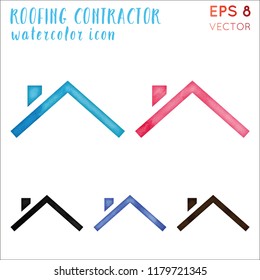Acknowledging The Essential Distinctions In Between Interior And Exterior Paint Can Enhance Your Task Outcomes. Furnish On Your Own With The Necessary Information Before You Start Your Painting Venture
Acknowledging The Essential Distinctions In Between Interior And Exterior Paint Can Enhance Your Task Outcomes. Furnish On Your Own With The Necessary Information Before You Start Your Painting Venture
Blog Article
Content By-Boisen Henry
When you're picking in between exterior and interior paint, it's essential to comprehend their fundamental distinctions that affect both efficiency and appearances. Interior paints are crafted for reduced VOC degrees and smoother coatings, making them perfect for interior areas, while outside paints are designed to endure harsh weather and UV direct exposure. Each type serves a distinct function, yet understanding when to use one over the other can significantly influence your task's result. So, what factors should you consider when making your option?
Composition and Solution
When picking in between exterior and interior paint, recognizing their make-up and formulation is critical. Inside paints typically contain a reduced quantity of unstable organic compounds (VOCs), making them more secure for indoor air high quality. You'll notice they commonly have a smoother coating, which improves their capability to resist discolorations and permits much easier cleansing. They're designed to stand up to the rigors of indoor settings, including varying humidity degrees and temperature variations.
On the other hand, outside paints are formulated to sustain harsher problems. They typically have greater levels of pigments and additives to resist fading from UV rays, in addition to to prevent mildew and mold development. Their make-up includes more binders and materials, which provide better bond to surfaces exposed to the elements. This guarantees the paint can withstand rain, snow, and rising and fall temperatures without peeling or breaking.
Efficiency and Resilience
Examining efficiency and resilience is essential when choosing in between exterior and interior paint. Interior paint is designed for surface areas that experience much less damage. It typically resists fading and scuffing, making it optimal for living areas and rooms. Nonetheless, minnesota painting contractors might not stand up well in high-moisture locations like bathroom and kitchens without proper solution.
On the other hand, outside paint encounters harsher conditions. It's crafted to hold up against UV rays, rain, and temperature level fluctuations. This type of paint often includes additives that stop mold and mold growth, making certain long life in numerous environments. When straight line painting reviews make use of external paint, you can expect it to last several years longer than interior paint, supplied it's used properly.
Another crucial difference depends on the surface options. Inside paints often have a variety of finishes for visual allure, while outside paints focus on resilience over luster. If you're searching for something that can deal with the components, exterior paint is your best choice.
On the other hand, if you're concentrated on indoor visual appeals with much less concern for extreme conditions, interior paint may be ideal. Eventually, your option should straighten with the specific needs of the setting.
Aesthetic Factors to consider
A fresh coat of paint can change a space, but visual considerations play an important role in your selection between exterior and interior choices. When https://www.countryliving.com/uk/homes-interiors/interiors/a39294534/painting-mistakes-tips/ selecting paint, think of the state of mind you intend to produce. Inside paint permits you to discover a bigger series of colors and surfaces, allowing you to express your personal design and improve your home's ambiance. Whether you choose soft pastels or vibrant hues, the appropriate interior paint can make your rooms really feel cozy, vivid, or peaceful.
On the other hand, exterior paint requires to line up with your home's architecture and the surrounding setting. Here, you're not simply making a style statement; you're also considering aesthetic appeal. Selecting colors that balance with your area can increase your home's value and visual appeal. Keep in mind that exterior paint is also subject to fading and climate modifications, so choosing a classic shade can save you from regular repainting.
Ultimately, take into consideration exactly how each option fits your vision. By straightening your paint option with your wanted aesthetic, you can develop spaces that show your personality while preserving performance.
Verdict
When it pertains to picking paint, comprehending the crucial differences between interior and exterior alternatives is essential. Interior paints focus on aesthetic appeals and low VOCs, making them ideal for boosting your indoor spaces. On the other hand, exterior paints are made for sturdiness and climate resistance, protecting your home from the components. By considering your specific requirements and the setting, you can confidently select the ideal paint to achieve the appearance and longevity you prefer for your space.
